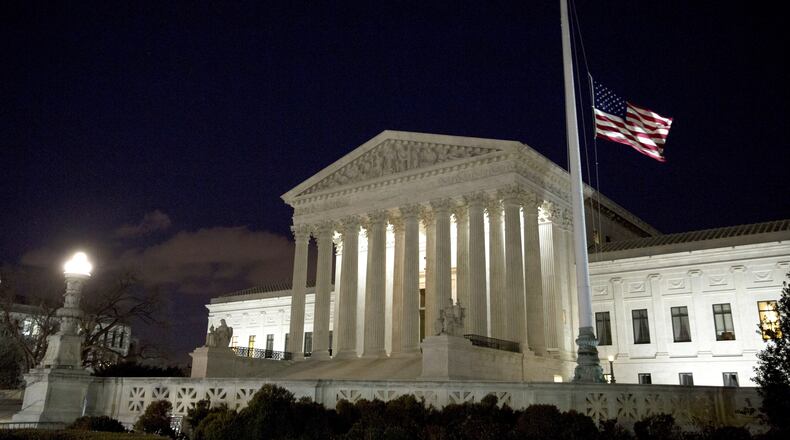Almost immediately upon the news of the death of U.S. Supreme Court Justice Antonin Scalia, the argument began over whether President Barack Obama should appoint a justice to fill the vacancy in the 9-person court or leave that decision to his successor.
The president was quick to answer Saturday night, saying in a short address to the nation that he intended to fulfill his constitutional duty by submitting a nominee to fill Scalia's seat on the High Court.
The process for fillilng a vacant seat on the U.S. Supreme Court is not a quick one nor easy one. What are the steps involved? Here’s a quick look at the process.
1. The president selects a nominee – On the death, retirement or impeachment of a Supreme Court justice, the president has a constitutional duty to nominate someone to take his or her place.
Article Two of the U.S. Constitution – the "Appointments Clause" – gives the executive branch the authority to appoint court justices. The clause reads in part, "… he shall nominate, and by and with the advice and consent of the Senate, shall appoint ... judges of the supreme court, and all other officers of the United States, whose appointments are not herein otherwise provided for, and which shall be established by law..."
Not an easy task, the president generally looks for a person with substantial judicial experience; one who shares his ideology (almost always a member of the same political party), and one who actually has a chance to be confirmed by the Senate.
Before the nominee is announced, he or she is investigated by the FBI and other agencies.
2. The confirmation process – Who can served on the High Court? Anyone, really, since the Constitution does not set qualifications for a Supreme Court justice. The only hurdle the Constitution requires is that the nominee be confirmed by the Senate in order to take a seat on the court.
Once that nominee is put forth by the president, the nomination will go before the Senate’s Judiciary Committee. The committee is currently made up of 11 members of the majority party (the Republicans) and nine members of the minority party (the Democrats). That ratio of members is based on the ratio of majority to minority members of Senate.
The Judiciary Committee will hold hearings, questioning the nominee, supporters and opponents. The nominee attends the hearings which can last for days, despite the fact the Constitution does not require a nominee to testify. The Committee's practice of personally interviewing nominees isn’t an historical one. The committee only began to do that in the 1940s.
After the hearings, a vote is taken in the committee. The nominee will receive a favorable recommendation, a negative one or the nomination will be reported to the full Senate with no recommendation.
3. The floor vote – If the nomination makes it out of the committee and to the Senate floor, it is at the mercy of the majority party since that party sets the agenda for Senate action. The Majority Leader, currently Republican Sen. Mitch McConnell, will determine when the nomination sees the light of day on the full Senate floor. There is no time frame for him to act.
Likewise, once the nomination makes it to the floor, debate could go on for an indefinite time period since there is no limit on debate on a nomination. If it does get to a vote, it’s a simple majority vote to either confirm of reject a nominee.
4. An end-run – While Senate confirmation is required for a nominee to be appointed to the Supreme Court, if the president wants to, he can make a temporary appointment to fill the vacancy without the Senate having anything to do with it or even being in session. If the Senate is on recess, the president can make something called a "recess appointment" – meaning he simply appoints someone to the vacant court seat. The person appointed would serve on the court until the end of the next Senate session. After that point, the person appointed must go through the formal process of being nominated by the president and confirmed by the Senate. Potter Stewart was the last recess appointment to the Supreme Court made in 1954 by President Dwight D. Eisenhower.
Facts about justices:
- You do not have to be a lawyer to be a Supreme Court justice.
- Once confirmed, a justice sits on the Supreme Court for life.
Sources: USpolitics.about.com; history.com; The Associated Press
About the Author

